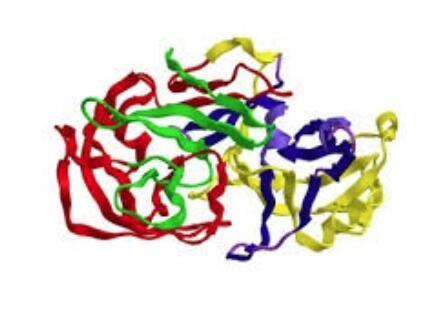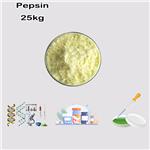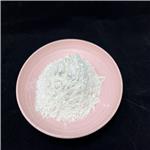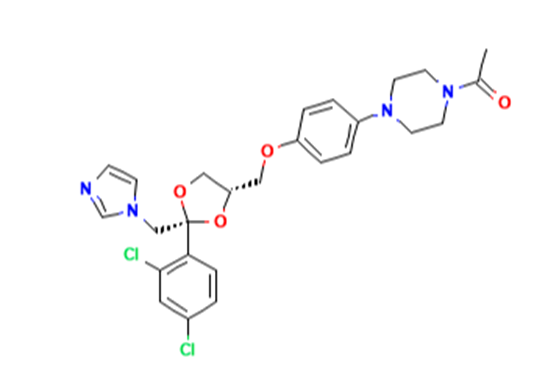Function and Applications of Pepsin
Pepsin is one of three principal endopeptidases (enzymes cutting proteins in the middle) in the human digestive system, the other two being chymotrypsin and trypsin. There are also exopeptidases which remove individual amino acids at both ends of proteins (carboxypeptidases produced by the pancreas and aminopeptidases secreted by the small intestine). During the process of digestion, these enzymes, each of which is specialized in severing links between particular types of amino acids, collaborate to break down dietary proteins into their components, i.e., peptides and amino acids, which can be readily absorbed by the small intestine. The cleavage specificity of pepsin is broad, but some amino acids like tyrosine, phenylalanine and tryptophan increase the probability of cleavage.

Function
Pepsin is an endopeptidase that breaks down dietary proteins reaching the stomach into amino acids. It functions by digesting peptide bonds, the predominant chemical bonds found in proteins. In response to various stimuli, small basophilic cells in the deeper layers of gastric glands, known as Chief cells, produce pepsinogen. Notably, acetylcholine, gastrin, and low pH directly stimulate chief cells to secrete pepsinogen. Acetylcholine is a neurotransmitter released from vagal parasympathetic nerve terminals in the "cephalic phase" of food digestion.
Besides enhancing chief cell activity, it also stimulates parietal cells to produce hydrochloric acid (HCl) via their proton pumps. The low pH imposed by HCl breaks down pepsinogen into its active form, pepsin. Gastrin is another gastrointestinal hormone released by G cells in the stomach antrum and the duodenum. G cells secrete gastrin in response to many stimuli, including stomach distension, amino acids and peptides, high pH, and vagal stimulation. Similar to acetylcholine, gastrin also activates parietal cells to secrete hydrochloric acid (HCL) on top of its chief cell stimulatory effects.
It does so both directly, and indirectly, through the action of histamine released by enterochromaffin-like (ECL) cells. Histamine is, in fact, the most potent activator of parietal cells. Somatostatin, on the other hand, is an inhibitory gastrointestinal hormone released by D cells in the duodenum and stomach antrum. It inhibits pepsinogen release from chief cells, thereby opposing the effects of gastrin, HCl, and acetylcholine.
Activity and stability
Pepsin is most active in acidic environments between pH 1.5 to 2.5.Accordingly, its primary site of synthesis and activity is in the stomach (pH 1.5 to 2). In humans the concentration of pepsin in the stomach reaches 0.5 – 1 mg/mL.
Pepsin is inactive at pH 6.5 and above, however pepsin is not fully denatured or irreversibly inactivated until pH 8.0.Therefore, pepsin in solutions of up to pH 8.0 can be reactivated upon re-acidification. The stability of pepsin at high pH has significant implications on disease attributed to laryngopharyngeal reflux. Pepsin remains in the larynx following a gastric reflux event.At the mean pH of the laryngopharynx (pH = 6.8) pepsin would be inactive but could be reactivated upon subsequent acid reflux events resulting in damage to local tissues.
Pepsin exhibits a broad cleavage specificity. Pepsin will digest up to 20% of ingested amide bonds.Residues in the P1 and P1' positions are most important in determining cleavage probability. Generally, hydrophobic amino acids at P1 and P1' positions increase cleavage probability. Phenylalanine, leucine and methionine at the P1 position, and phenylalanine, tryptophan and tyrosine at the P1' position result in the highest cleavage probability. Cleavage is disfavoured by positively charged amino acids histidine, lysine and arginine at the P1 position.
Applications
Commercial pepsin is extracted from the glandular layer of hog stomachs. It is a component of rennet used to curdle milk during the manufacture of cheese. Pepsin is used for a variety of applications in food manufacturing: to modify and provide whipping qualities to soy protein and gelatin,to modify vegetable proteins for use in nondairy snack items, to make precooked cereals into instant hot cereals,and to prepare animal and vegetable protein hydrolysates for use in flavoring foods and beverages. It is used in the leather industry to remove hair and residual tissue from hides and in the recovery of silver from discarded photographic films by digesting the gelatin layer that holds the silver.Pepsin was historically an additive of Beeman's gum brand chewing gum by Dr. Edwin E. Beeman.
Pepsin is commonly used in the preparation of F(ab')2 fragments from antibodies. In some assays, it is preferable to use only the antigen-binding (Fab) portion of the antibody. For these applications, antibodies may be enzymatically digested to produce either an Fab or an F(ab')2 fragment of the antibody.
You may like
Related articles And Qustion
Lastest Price from Pepsin manufacturers

US $0.00-0.00/g2025-05-28
- CAS:
- 9001-75-6
- Min. Order:
- 1g
- Purity:
- 98.0%
- Supply Ability:
- 1kg/month

US $100.00/KG2025-04-21
- CAS:
- 9001-75-6
- Min. Order:
- 1KG
- Purity:
- 99%min
- Supply Ability:
- 200TON



